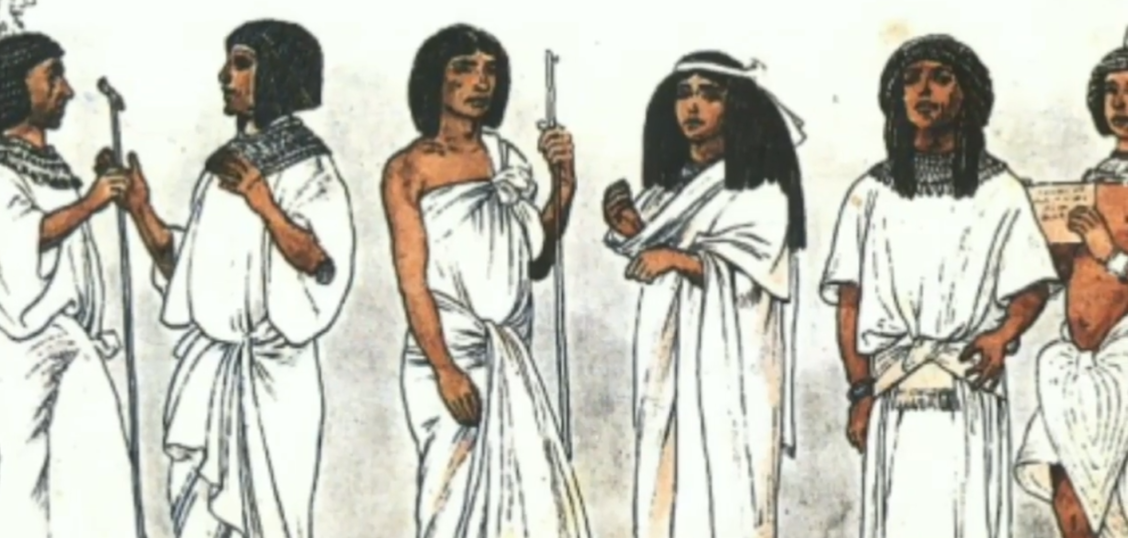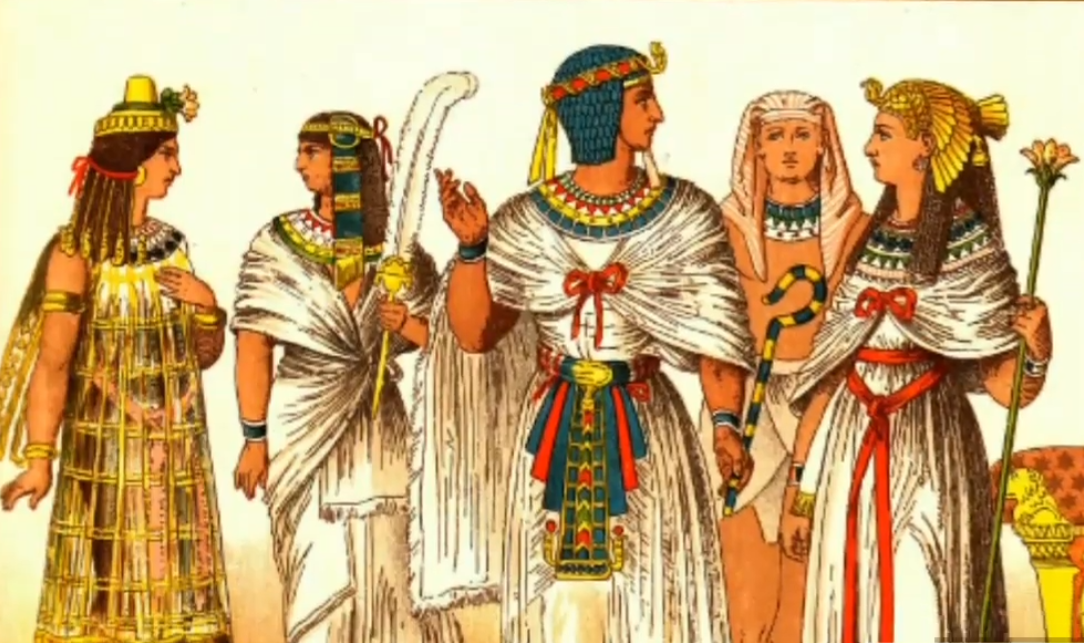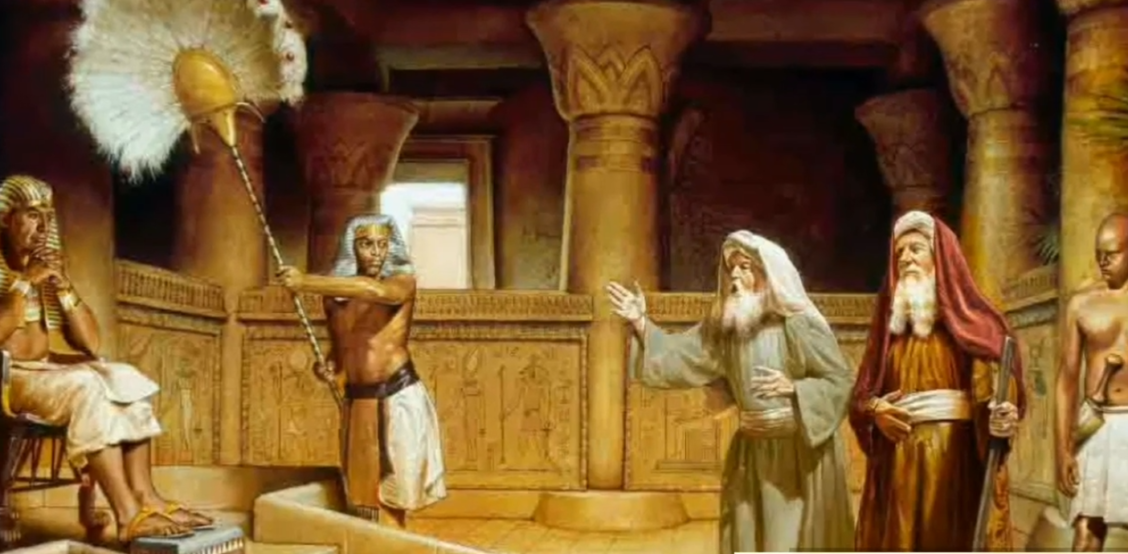From ancient times the main clothing of men was an apron, a loincloth or a short skirt. The fabric and size varied depending on social status: for commoners and slaves it was a simple piece of leather or paper cloth that fit around the hips, for the nobility it was an oblong piece of fabric tightly wrapped around the waist and upper legs and fastened with a belt. Gradually, the apron and skirt lengthened, and it became fashionable to wear one more longer and wider apron or skirt, sometimes made of transparent fabric. Noble men also covered the upper part of the body. At first, this was done with a narrow cloak that was thrown over their shoulders or a trimmed tiger (leopard) skin that protected the back; it was passed under the arms and tied on the shoulders with belts. In the New Kingdom era, a dress made of expensive cloth such as a shirt or cape became widespread.
Unlike men, women had to cover their bodies. Their oldest clothing was a woven dress, which covered the body from chest to feet and was held on straps, sometimes with short and narrow sleeves; over time it began to be decorated with colorful patterns. Later noble women began to throw thin transparent veils over them. The costume of a noble Egyptian woman in the XVIII-XX dynasties consisted of a wide shirt, a short skirt and a large cloak with rounded edges.
The custom of covering the head and wearing shoes spread in Egypt only by the time of the New Kingdom. Both men and women wore clogs and sandals made of leather or narrow strips of papyrus; sandals were fastened to the foot with straps. Shoes were worn only when leaving the house. The traditional male headdress was a round, close-fitting hat made of leather or paper cloth, sometimes of leaves and stems. Pharaohs and dignitaries preferred a peculiar cap with long “ears” and a “scythe” twisted into a bundle at the back. Women threw a large kerchief over their heads, gathered in folds and covering their hair like a sheath.
In the early period, men wore their hair short and women long and bouffant. Later, it became customary for men to shave their hair and beard, and this fashion also spread among noble women. At the same time aristocrats began to use false beards and wigs, usually curled.
Barley cakes, emmer porridge, fish (primarily dried) and vegetables were the main food, barley beer being the main drink. The diet of the noble also included meat, fruit, and grape wine. There were no forks. No knives were used at meals: food was served on trays already cut up into pieces, which were taken with the fingers of the right hand. Liquid food was eaten with spoons; it was drunk from shot glasses and goblets. A variety of vessels, ladles and jugs were the main part of the kitchen utensils. Tables were originally a round or quadrangular board on a low stand; real dining tables and chairs appeared later.


